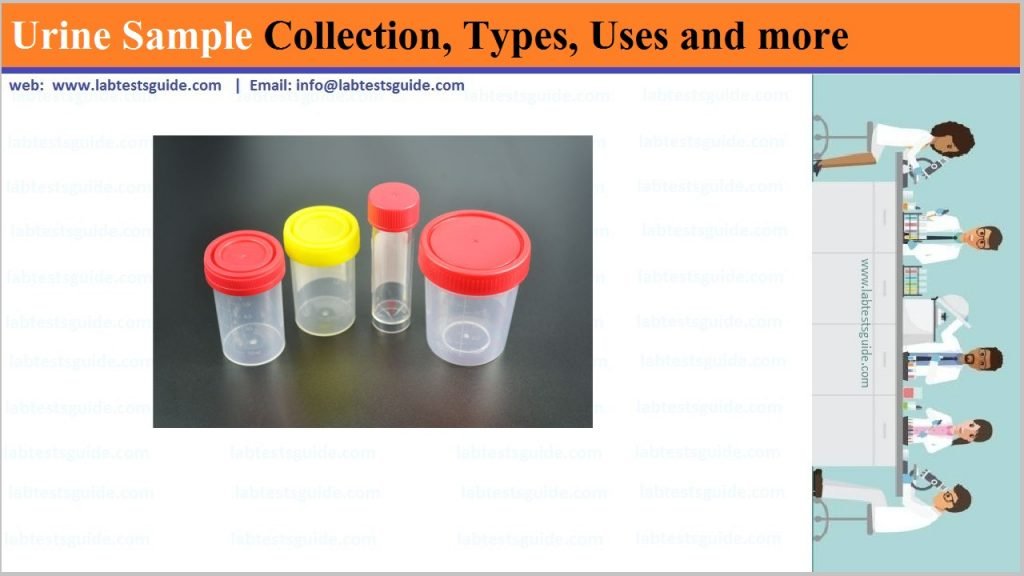
Urine has a long, rich history as a source for measuring health and well-being and remains an important tool for clinical diagnosis. The clinical information obtained from a urine specimen is influenced by the collection method, timing and handling.

- collect your urine sample in a completely clean (sterile) container
- store it in a fridge in a sealed plastic bag if you can’t hand it in straight away
The types of urine sample you might be asked for include a random specimen, first morning specimen, mid-stream urine (MSU) timed collection.
To collect a urine sample you should:
- label a sterile, screw-top container with your name, date of birth and the date
- wash your hands
- start to urine and collect a sample of urine “mid-stream” in the container
- screw the lid of the container shut
- wash your hands thoroughly
Follow any other instructions your doctor has given you.
What is a mid-stream urine sample?
A mid-stream urine sample means you don’t collect the first or last part of urine that comes out. This reduces the risk of the sample being contaminated with bacteria from:
- your hands
- the skin around the urethra, the tube that carries urine out of the body
Urinalysis and Culture and Susceptibility
Submit a urinalysis preservative tube and culture and susceptibility preservative tube. Label both filled tubes with the patient’s first and last name and second identifier. Include the date and time of specimen collection on each specimen container.
Urinalysis Only
Submit a urinalysis preservative tube. Label filled tube with the patient’s first and last name and second identifier. Include the date and time of specimen collection on each specimen container.
Culture and Susceptibility Only
Submit a culture and susceptibility preservative tube. Label the filled tube with the patient’s first and last name and second identifier. Include the date and time of specimen collection on each specimen container.
Types of urine Sample
- Random specimens: As the name implies, random specimens can be collected at any time.
- First morning specimen (also known as an eight-hour specimen). The urine is generally more concentrated in this type of specimen because it has been in the bladder for an extended period of time. This may enhance the detection of cellular elements and protein, if present.
- Midstream clean-catch specimens: The patient is instructed to clean the labial area or tip of the penis with an antiseptic wipe. The patient should then begin voiding into the toilet, collect the midstream portion into the sterile container, and then finish voiding into the toilet. This type of collection is necessary when a urine culture is ordered.
- Timed Collection Specimen Among the most commonly performed tests requiring timed specimens are those measuring creatinine, urine urea nitrogen, glucose, sodium, potassium, or analytes such as catecholamines and 17-hydroxysteroids that are affected by diurnal variations.
timed specimen is collected to measure the concentration of these substances in urine over a specified length of time, usually 8 or 24 hours. - 24-hours Urine Sample: A 24-hour urine collection is a simple lab test that measures what’s in your urine. The test is used to check kidney function. A 24-hour urine collection is done by collecting your urine in a special container over a full 24-hour period. The container must be kept cool until the urine is returned to the lab. Read more
Read Also : 24-Hour Urine Sample Collection purpose, Procedure and more
Storing a urine sample and Transport Guidelines
If you can’t hand your urine sample in within 1 hour, you should put the container in a sealed plastic bag then store it in the fridge at around 4C. Do not keep it for longer than 24 hours.
The bacteria in the urine sample can multiply if it is not kept in a fridge. If this happens, it could affect the test results.
- All urine collection and/or transport containers should be clean and free of particles or interfering substances.
- The collection and/or transport container should have a secure lid and be leak-resistent. Leak-resistent containers reduce specimen loss and healthcare worker exposure to the specimen while also protecting the specimen from contaminants.
- It is good practice to use containers that are made of break-resistant plastic, which is safer than glass.
- The container material should not leach interfering substances into the specimen.
- Specimen containers should not be reused.
Related Articles:
RELATED POSTS
View all

